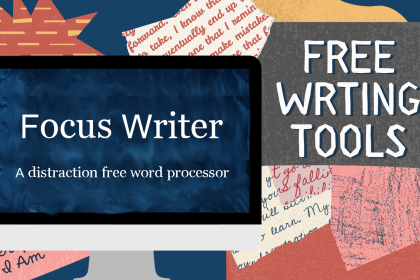In the last two installments of this series I introduced you to the tool I use for planning and the tool I use for writing a first draft. But as brilliant as it is to write “The End” under your first draft, it is actually only the beginning of the journey. So much more still needs to be done: self-editing, sharing your work with beta readers or a professional content editor, more editing to implement all those changes, copy-editing, proofreading, formatting and exporting to a publishable file format. And while most of this is possible with a generic word processing tool like Microsoft Word, Pages or Libre Office, it is cumbersome and takes a lot of patience to learn how to do it.
This is where Papyrus Author comes in. Other than Tiddly Wiki or FocusWriter, Papyrus Author is not free open source. Instead it is a very powerful commercial writing software. Actually, I would say it is probably the most complete and feature rich writing software on the market. It’s the English translation of the immensely popular German Papyrus Autor software that has become the go-to tool for many professional German writers, both traditionally and self-published. But while the German version is a lifelong license that comes at a relatively hefty price, the English version is available only through a subscription model. So why do I mention it in my “Free Writing Tools” series? Well, there are two different subscription plans and one of them is completely free. And while the paid version offers some nice extra tools, the free version offers everything you need to write a complete novel from beginning to end, edit it, share it with others, format it and publish it. As long as you use an external tool to store your research, character notes etc. (which are some of the features hidden behind the paywall), you’ll probably never even feel the need to sign up for the paid plan.
Papyrus Author (at least in the German version) has been around for a pretty long time. It started its life in the 1990 as a generic word processing program and direct competition to programs like Microsoft Office or Star Office and only later specialized on more author specific features. Due to its long lifespan, the user interface is relatively traditional, relying heavily on classic menus, toolbars and configuration dialogs. If you are a dinosaur like me, that probably makes it feel familiar and relatively easy to get used to. If you are more used to modern, web-interface based designs, it will feel confusing, cluttered and outdated.
It is an intensely feature rich program with a very steep learning curve. Think Scrivener on steroids. But there is a very nice official online community that offers support and there are video tutorials available for all important features and use cases, so if you are willing to invest some time, it is absolutely possible to learn the ins and outs of the software. And I would argue that it is time well spent.
Papyrus Author is available for Windows and Mac only. Unfortunately there is no mobile version for Android or iOS yet and no native Linux version.
Some of my favorite features in Papyrus Author are: pinboards that hold images, sticky notes etc. beside your document, track-changes (fully compatible to Word, I used it to work with my copy-editor without any problems), a navigator that not only shows all your scene and chapter titles but can also display extra information like word count, characters, summary etc. for each chapter. You can also easily move scenes and chapters around this way. Another great feature is ghost text, that allows you to completely mummify parts of your novel without having to delete or move them. Great if you are afraid to erase anything through editing that you might want again later.
Speaking of ‘might want again later’, Papyrus also offers great backup functionality which stores not only the last version, but also several document versions before that, so that you can always return to an earlier state.
And if you are thinking about self-publishing, Papyrus Author is one of the few tools that fully supports you there as well. You can format for both PDF and EPUB. The PDF is generated directly from what you see on screen and therefore pretty straight forward. The EPUB is a bit trickier. There are some templates provided and as long as you don’t need any special formatting, they will suffice and look neat and clean on any ebook reader. But if you want something a bit more fancy, like ornamental chapter breaks or the like, you might need to familiarize yourself with HTML and CSS a little bit to make the most of it. It’s not quite as easy as a tool like Vellum or Atticus in that respect.
Papyrus Author is great if you want a one-place solution for all your writing needs and if you have the patience to figure out how things work. It’s not for you if you want to work from many different devices like your mobile phone etc. and if you like a modern, clean looking interface.
Still, I’m surprised how little traction Papyrus Author has, especially in the self-publishing scene, because it really offers everything you need and then some in incredibly high quality for absolutely free. Everyone with a Windows computer or a Mac should at least give it a try at some point.




